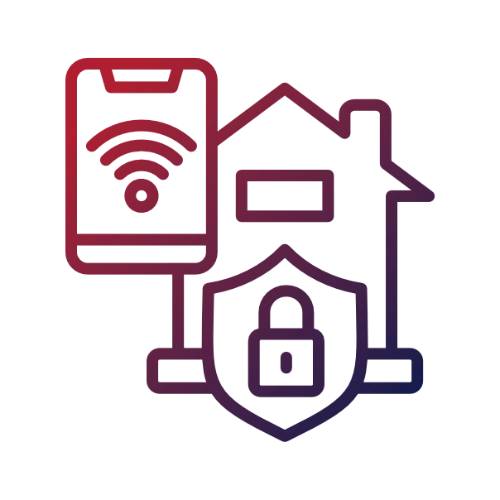
IoT Penetration Testing
Are your IoT devices resistant to cyberattacks? IoT penetration testing identifies and eliminates vulnerabilities in device hardware, software, and network communication. Our testing ensures your IoT systems do not pose a threat to user data or infrastructure integrity.
Benefits of IoT Penetration Testing
Identification of hardware and software vulnerabilities

– we assess the security of firmware, configurations, and physical interfaces.
Securing network communication

– we test resilience against MitM attacks, data interception, and traffic manipulation.
Authentication and authorisation validation

– we ensure devices are protected from unauthorised access.
Compliance with regulations and standards

– testing helps meet security requirements such as IEC 62443, the NIST IoT Cybersecurity Framework, and GDPR.
What Is IoT Penetration Testing?
IoT penetration testing is a comprehensive security assessment that targets the hardware, firmware, and communication layers of connected devices. We simulate real-world attack scenarios to identify and eliminate vulnerabilities within your IoT ecosystem.
During the assessment, we analyse:
- Hardware interfaces – vulnerabilities in UART, JTAG, SPI and other physical ports.
- Firmware security – code and configuration review of the device’s operating system and embedded software.
- Data encryption and storage – testing mechanisms for protecting and storing sensitive data on the device.
- Network communication – sniffing, spoofing, and Man-in-the-Middle (MitM) attack resilience.
- API and cloud interfaces – testing exposure to attacks via weak points in APIs or cloud connections.
Our testing ensures your IoT devices meet the highest security standards and protect end users from potential threats.
Tools We Use
We use advanced techniques and specialised tools tailored to IoT environments:
- Binwalk & Firmware Analysis Toolkit – for firmware extraction and vulnerability analysis.
- Shodan & Censys – to identify publicly exposed IoT devices and assess their threat surface.
- Burp Suite & Postman – for testing APIs and backend services of IoT devices.
- Wireshark & Tcpdump – to inspect network traffic and detect unauthorised data transmission.
- JTAGulator & Bus Pirate – for physical interface testing and hardware-level vulnerability discovery.
Our assessments follow OWASP IoT Top 10, as well as NIST and IEC 62443 security guidelines.
Frequently Asked Questions
Do you only test physical IoT devices?
No – we test the hardware, firmware, cloud connections and mobile app integrations associated with IoT ecosystems.
Can testing damage or disrupt the device?
Our tests are performed in controlled environments to avoid device malfunction. If invasive testing is required, we use backups or test environments to ensure safe execution.
Which industries should conduct IoT testing?
Any organisation deploying IoT devices should regularly test its systems. This includes sectors such as manufacturing, healthcare, transport, smart cities, smart buildings and finance.
How often should IoT penetration tests be performed?
We recommend testing after every firmware update, new feature release, and at least annually to ensure ongoing device security.
Request a Quote
Contact details



